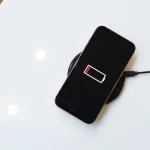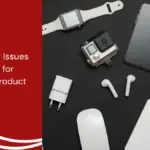Without realizing it, we have enjoyed many benefits of Wireless Power Transfer (WPT) technology in various fields, from wireless cell phone charging to applications in the industrial and healthcare sectors. But do you know what this technology actually is?
Since its invention in the 19th century, wireless power transmission technology has continued to evolve and penetrate various aspects of our lives. This technology, which enables the transmission of electrical energy from one point to another without the use of physical cables, also offers benefits in terms of mobility, time efficiency, and global connectivity in our daily lives.
This article will discuss wireless power transmission in more depth, including its definition, history, benefits, and regulations. This way, you can learn more about this technology.
Also Read
Table of Contents
What is Wireless Power Transmission?
Wireless power transmission (WPT) is a technology that transmits electrical energy from a source to a device without the use of physical cables. This technology utilizes electromagnetic fields, electric fields, or magnetic fields to replace physical cables for power transfer.
The goal is to reduce dependence on cables that are cumbersome, dangerous, or impractical in certain applications. It is commonly used in electronic devices, electric vehicles, and medical equipment.
A Brief History

Exploring wireless power transmission also requires an understanding of its origins. This technology originated in the 1890s when Tesla began experimenting with wireless energy transmission using the principles of resonant inductive coupling and coils.
1893 marked the first year of wireless lighting with the illumination of a Geissler lamp. Nine years later, a small flying machine successfully flew 30 meters using energy transmission from space during the St. Louis World’s Fair. Research in Goldstone, California, in 1975 successfully transferred several kilowatts of energy using microwave transmission over a distance of 1 kilometer.
In the modern era, researchers at the University of Washington introduced “trickle-charging” technology in 2015. This research discovered the use of WiFi signals capable of powering cameras and sensors without batteries up to a distance of 6 meters. Today, WPT technology has been commercialized in various devices, including phone chargers and electric cars.
How Does it Work?

Wireless power transmission technology works based on several principles, namely:
- Laser-based power transmission: Uses a laser beam directed at a receiver that can convert light energy into electrical energy. This application is designed for devices that require minimal power.
- Inductive coupling (electromagnetic induction): This technique transfers power through an electromagnetic field between two coils that are close together. It is commonly used in wireless chargers for cell phones and other small devices.
- Resonant inductive coupling: Uses a matching resonance frequency between the transmitter and receiver to increase power transfer efficiency over longer distances. Commonly used in wireless charging for electric vehicles.
- Microwave power transmission: Uses microwaves to transmit energy over longer distances. This technology is more common in projects that require long-distance power transmission.
The Advantages
Here are the advantages of wireless power transmission:
- Supports IoT and smart home innovation: Enables smart home devices to charge automatically without requiring manual interaction.
- Convenience without cables: There are no cables to get in the way or break, so devices can be charged simply by placing them near the charger.
- Reduced risk of wear and tear: With no cables to plug in and unplug, the risk of damage to ports and cables is reduced.
- Enhanced safety in industrial environments: In industrial settings, wireless power transmission reduces the risk of accidents such as tripping over cables or short circuits.
Usage Regulations

Wireless Power Transmission that operates within a specific frequency spectrum. In every country, all WiFi-based wireless devices are required to have Radio Frequency (RF) Certification.
WPT regulations require all radio frequency-based devices to meet certain technical standards before they can be sold in that country. This certification ensures that the product complies with government safety and quality regulations and does not interfere with other communication devices.
The certification process involves technical testing, including frequency adjustment, safety checks, and verification of compatibility with the surrounding environment. Once testing is complete, products that pass will be listed in a Test Report, confirming that they are safe and ready for sale. This report assures customers that the product meets technical standards and is secure.
For companies wishing to sell the WPT product, Product Compliance Specialists are available to assist with this process. This service includes preparing technical and legal documents, conducting the necessary testing, ensuring regulatory compliance, helping companies streamline the certification process, and providing consumers with confidence in certified products.











